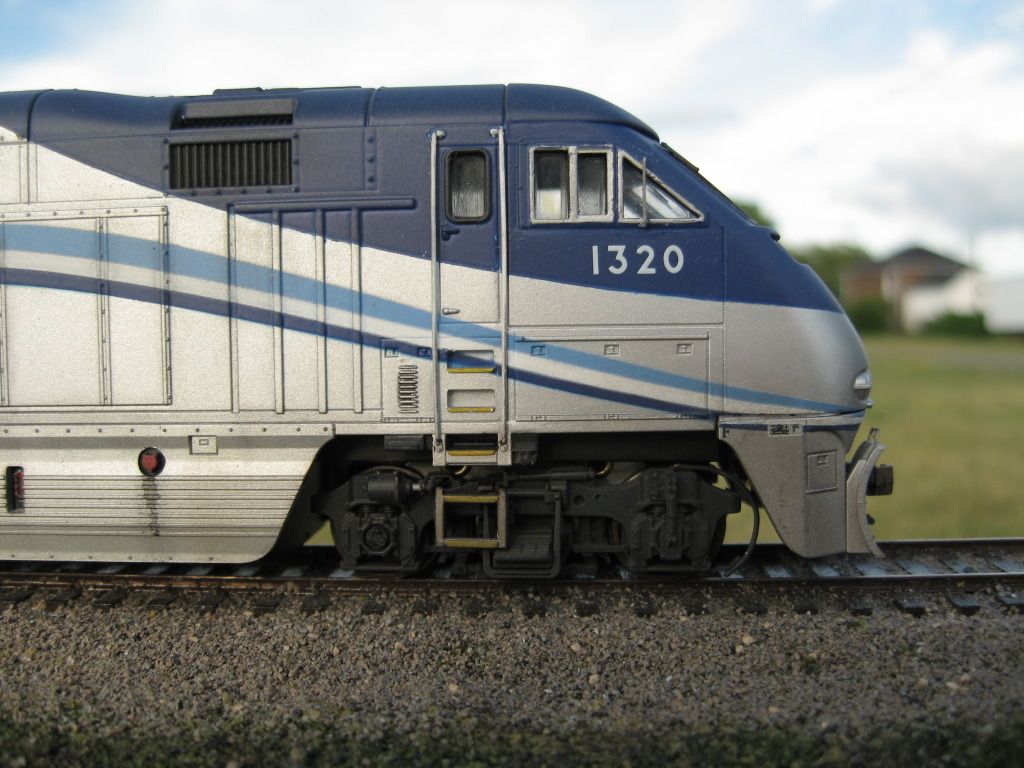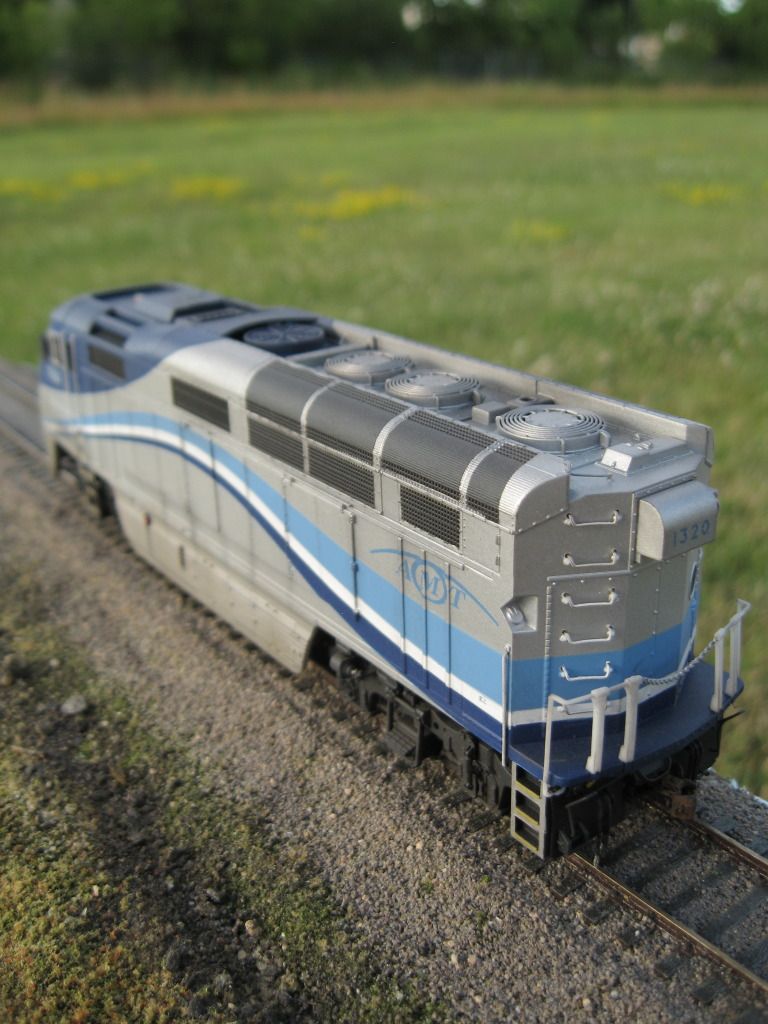As I began field research for this unit, I realized I had to undertake a few scratch building projects to render and authentic replica. For starters, the anticlimbers that adorn both the front and rear pilot faces were built from styrene stock, as there are no available replicas. They are made of 7 layers of different thickness styrene stock, cut from a template made using the contour of a Miniature by Eric CNR Anticlimber. The usual array of hoses, coupler cut bars and ploughs have also been attached to this model. A custom rear pilot was fashioned from a Juneco CNR pilot, using a mill file. The ditch light castings are Details West, and the Pyle headlight on the cab was removed and replaced with the superb casting by Details Associates.
As is standard with all Genesis Line Athearns, the unit's shell was very well executed. Even the dynamic brake grills are see-through and the photo-etched 48" fan comes included in the model. The front door casting is too thick, to allow for positioning. Using a mill file, a thinned it out and filled the window opening prior to installation. Custom front and rear railings were fashioned from Smokey Valley stanchions and hand-bent phosphor-bronze wire. Otherwise, stock railings were used . The sunshades are a wonderful product from Railfyer Model Products. The horn and antenna castings are by Details West.
The most time-consuming modification was the waste retention tank, located aft the fuel tank. Of course, the cast chassis had to milled down to accommodate a shortened fuel tank casting. The retention tank was fashioned from styrene stock and scrap fittings. Sand lines were installed using a realistic, but rather finnicky setup. It has proven to be fragile and I'm contemplating refurbishing them, along with adding brake lines.
The unit was painted with Acrylic paints. Trueline Trains CNR Red/Orange #11 and Testor's Gloss black fit the bill. Microscale decals were used to decorate the unit. I really think that the warning and data decals add so much realism to the unit, well worth the time. While it looks like I neglected to paint the sunshades, this isn't the case. Just check prototype photos!
The CNR red/orange paint quickly started to suffer on these units, in real life. I am not aware of any official reason for the severe and quick fading on the nose. I suspect that the anti-slip paint on the nose, (which contains a gritty base,) started to wash off and damage the paint on the nose. Another theory was the solvent used to clean the units adversly affected the orange tint. The unit was weathered with dry chalks, dilute airbrush washes and dry brushing. The streaking on the nose was achieved with extremely diluted "Dollar Store" acrylic white paint.









